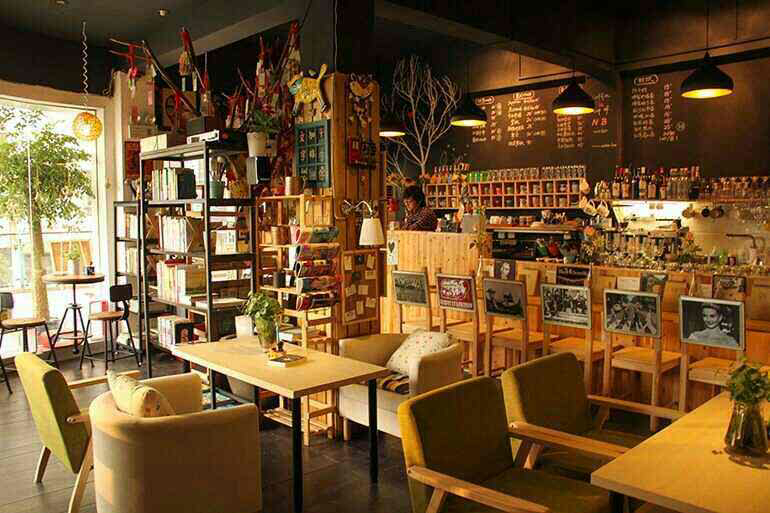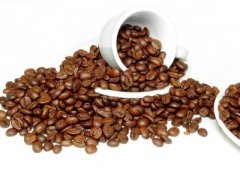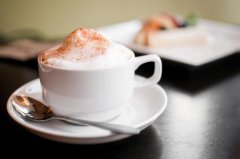The Development of Italian Coffee comes into Italian Coffee Culture
Whether you prefer coffee or tea, you may have different answers. But if you think that coffee and tea are perceived only through taste, you are biased. Sometimes, the definition of culture goes far beyond taste. Let it integrate into life, become a way of life; let it stay in time, become a kind of history.

Coffee time-- walking into Italy
The origin of Italy and coffee can be traced back to the 16th and 17th centuries. Coffee was introduced into Italy with the booming trade between the port of Venice and North Africa and Egypt. In 1600, the Pope baptized coffee, so coffee began to be widely accepted and gradually became popular throughout Europe.
In Italy, those old cafes sometimes carry a weight of time. In Milan in 1817, next to the top theatre LaScala, a cafe called COVA was born. Because of its proximity to the theatre, the success attracted actors, musicians, playwrights and celebrities. As a gathering place for art pioneers and scholars, it has left an important brushstroke in Italian history. What is more worth mentioning is that it was in this cafe that patriots discussed brilliant ideas on the eve of Milan's "five-day uprising". During World War II in 1943, the COVA and LaScala theatres were severely damaged. In 1950, COVA moved to the fashion center ViaMonenapoleone, with the accumulation of time, a large number of fans, even star David Beckham is no exception.
The rich coffee culture in Italy is also reflected in the accumulation and retention of its culture. Unlike the simplified instant in North America, the Italians have always retained a wide variety of coffee and its making techniques. In the National Finance Center store in COVA, you can see a variety of coffee-making utensils, each for its own purpose. And the Italian feelings for coffee, is deeply integrated into the coffee production process.
Espresso (espresso) is the base of all fancy coffee. It is a pure classic coffee with concentrated, aromatic and strong flavor produced by water and coffee powder under pressure. According to a professional lecturer at Shanghai illy Coffee University, a cup of high-quality espresso needs to use 6-7 grams (about 50) of Arabica coffee beans, ground into a fine powder of about 1 micron in diameter, flow through water at a temperature of 90 degrees Celsius and about 30cc at 9 atmospheric pressure, and extract about 30cc coffee liquid in no more than 30 seconds. The dark liquid, covered with a layer of brown grease, contains 1500 chemicals, forming an extremely complex and subtle fragrance.
Drinking espresso is a complex sensory journey. Before the entrance, first observe the appearance and color of the coffee, then smell its aroma, and finally taste the consistency and throat rhyme of the coffee. People who really know how to taste coffee tell us that there are more than 1000 fragrances in espresso. Among them, the baking aroma produced by the conversion of sugar in coffee beans during baking, with a hint of vanilla cocoa, flower-like aroma and sweetness similar to fresh fruit, is the most easily identified.
Important Notice :
前街咖啡 FrontStreet Coffee has moved to new addredd:
FrontStreet Coffee Address: 315,Donghua East Road,GuangZhou
Tel:020 38364473
- Prev

Coffee training knowledge and Culture Coffee History
In 1000 there was a doctor in Bukhara, and the philosopher was the first to record the therapeutic effects of coffee. The application of 1470-1500 coffee spread to Mecca and Masterna. 1517 brought coffee to Constantinople after conquering Egypt. The first coffee shop in Costantinople opened in 1554. 1570-80 the order of religious institutions in Costantinople
- Next

Rambo Rainbow House Cafe famous Ethiopian Cafe
The French symbolist poet Altier Rambo is undoubtedly a talented poet. by the time he was less than 20 years old, he had already written the vowels, the drunken Boat and the season of Hell. He has also had a sensational same-sex relationship with Verlaine, another symbolist poet ten years older than him. At the age of 20, Lambo officially closed his pen and began to self-exile for the rest of his life. Let me
Related
- How did the Salvadoran coffee industry develop in Central America?
- What exactly does the golden cup extraction of coffee mean?
- The Origin of Coffee flower
- [2023 Starbucks World Earth Day] there are more meaningful things besides free Starbucks coffee!
- What kind of coffee is there in Spain? 9 Flavors of Spanish Coffee
- Aromatic African coffee| Kenya's coffee culture and historical production area
- Liberica Coffee Bean knowledge: the characteristics of Liberian Coffee beans of the three original species of Coffee beans
- The origin and formula of Spanish latte introduces the taste characteristics of Bombon coffee in Valencia, Spain.
- How to adjust the solution of over-extracted coffee
- What is the tasting period of coffee beans? What is the period of coffee and beans? How should coffee wake up and raise beans?

